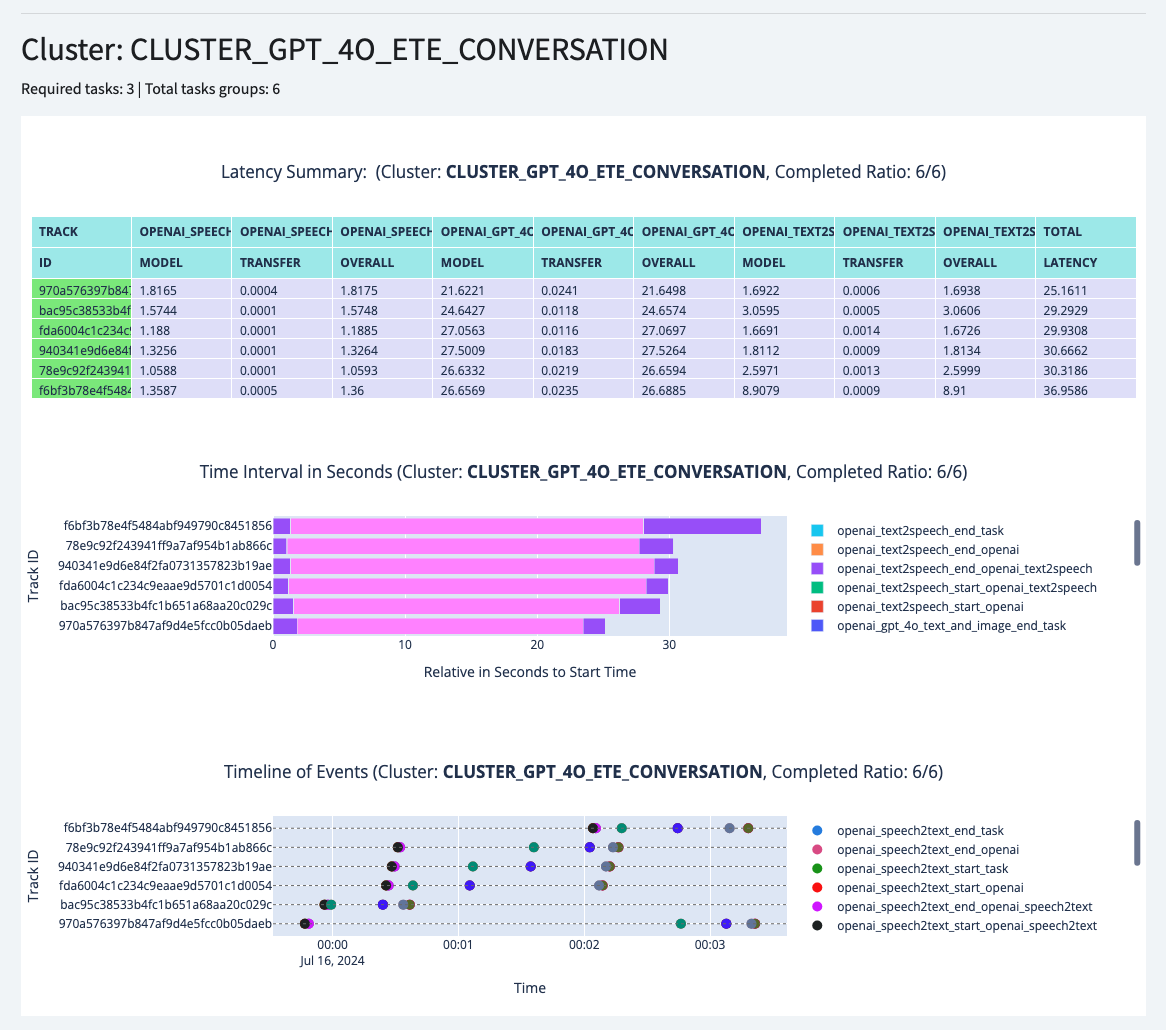Trial On Cloud
In this one, the STORAGE_SOLUTION is api, which means the audio and video data will be uploaded and downloaded via
the API endpoint.
Step 0: Get a token
Our deployed API is on https://openomni.ai4wa.com, you can use it to manage the tasks.
Login with username admin and password password, do not change the password, as it is a shared account.
Then you are free to create a new account for yourself.
And then use your own account to create a Token.

So here all you need to do is deploy the Client and Agent part.
Step 1: Clone the repository
# switch to a proper directory
git clone git@github.com:AI4WA/OpenOmniFramework.git
Step 2: Get Data Sync
cd ./OpenOmniFramework
cd ./Client/Listener
# create the virtual environment if this is your first time run this
python3 -m venv venv
source venv/bin/activate
pip3 install -r requirements.txt
pip3 install -r requirements.dev.txt # if you are doing further development
python3 storage.py --token your_token_from_step_0 --api_domain https://openomni.ai4wa.com
Step 3: Collect Audio and Video Data
cd ./OpenOmniFramework
cd ./Client/Listener
source venv/bin/activate
# run video acquire
python3 videos_acquire.py --token your_token_from_step_0 --api_domain https://openomni.ai4wa.com
You should be able to see something like this:

Then open a new terminal
cd ./OpenOmniFramework
cd ./Client/Listener
# create the virtual environment if this is your first time run this
python3 -m venv venv
source venv/bin/activate
pip3 install -r requirements.txt
pip3 install -r requirements.dev.txt # if you are doing further development
# run audio acquire
python3 audios_acquire.py --token your_token_from_step_0 --track_cluster CLUSTER_GPT_4O_ETE_CONVERSATION --api_domain https://openomni.ai4wa.com
# you can change the cluster to the one your need
You will see something like this:

If everything works, you should be able to check the newly create Data Audios, Data Videos and Speech2Text Tasks
in API Admin page.
Something like below:

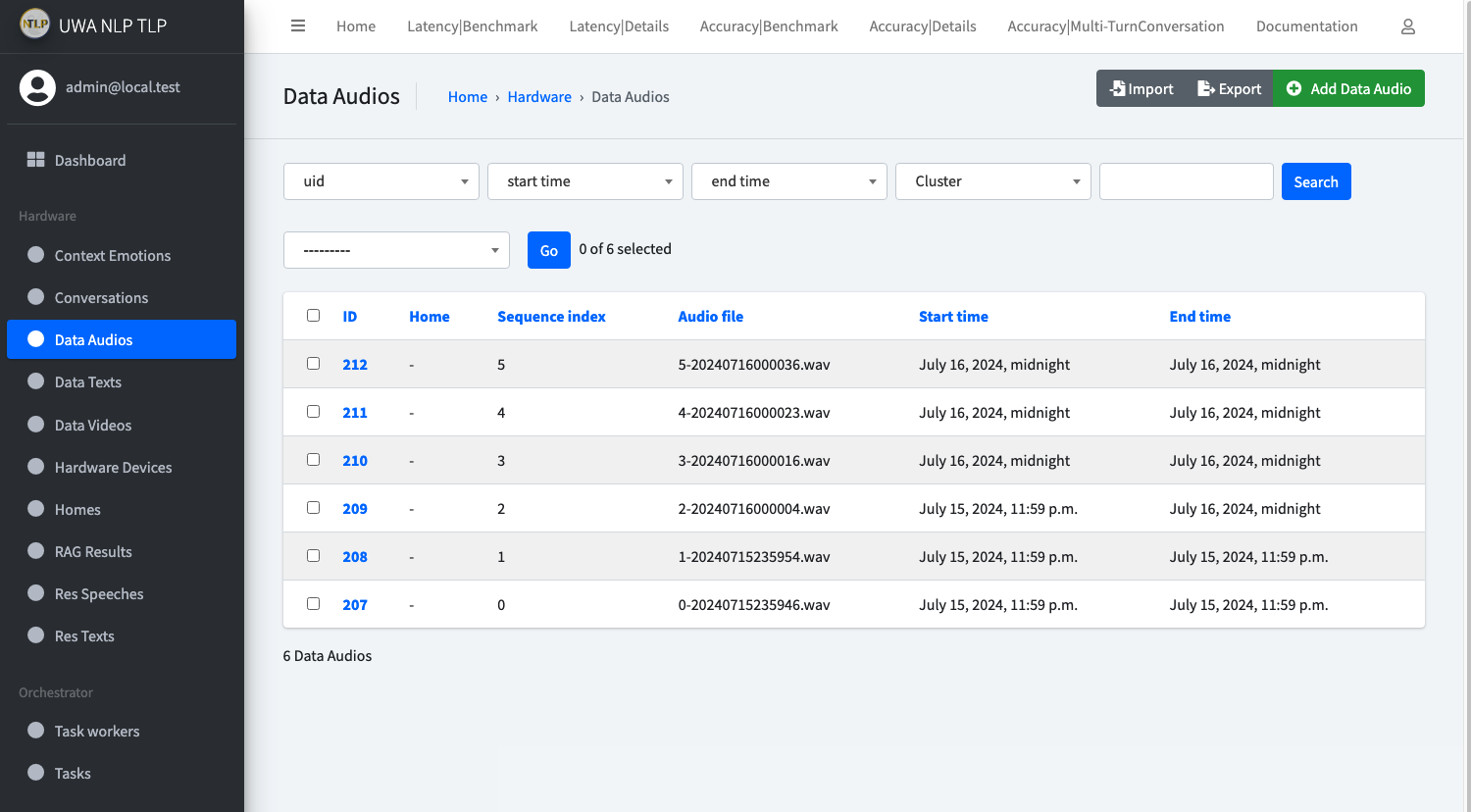

Step 4: Run Agent models
Now we need to start Agent module to consume the Tasks.
Same as above, we will need to first run the storage sync.
cd ./OpenOmniFramework
cd ./Agent
python3 -m venv venv
source venv/bin/activate
pip3 install -r requirements.txt
pip3 install -r requirements.dev.txt # if you are doing further development
python3 storage.py --token your_token_from_step_0 --api_domain https://openomni.ai4wa.com
Before we start the Agent module, there are some pre configurations we need to do.
As provided functionalities within Agent modules support OpenAI call, HuggingFace call, and there is also our provided emotion detection module.
We need to get them setup first.
Setup OpenAI and HuggingFace Environment Variable
Create a .env file in ./Agent folder, and add the following content:
HF_TOKEN=Your_HuggingFace_Token
OPENAI_API_KEY=Your_OpenAI_API_KEY
Otherwise, you can run
export HF_TOKEN=Your_HuggingFace_Token
export OPENAI_API_KEY=Your_OpenAI_API_KEY
For the model part, if you want to get our emotion detection model running, you will need to download the model from download link
And put it in the folder: ./Agent/data/models/emotion_detection/model_data.
It should be like this
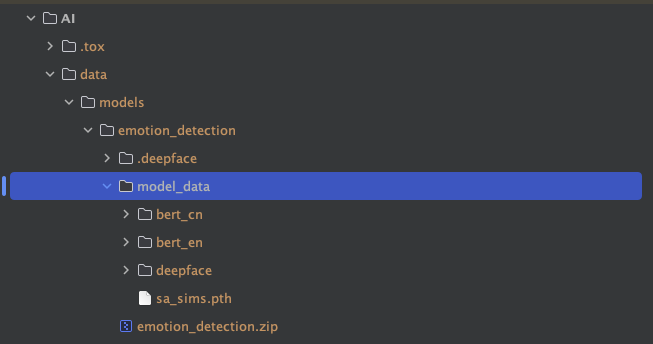
Then you should be ready to run the Agent module.
# run the Agent module
python3 main.py --token your_token_from_step_3
You can also skip the steps to install the requirements, directly run the Agent module with docker.
TOKEN=XXX docker compose up
This will allow you to utilise the GPU resources on your machine if you have one.

Until now, you will have the client side to feed the video/audio data to the API, and the Agent module to consume the data.
Step 5: Play speech audio in client side
cd ./OpenOmniFramework
cd ./Client/Responder
# create the virtual environment if this is your first time run this
python3 -m venv venv
source venv/bin/activate
pip3 install -r requirements.txt
pip3 install -r requirements.dev.txt # if you are doing further development
# run the audio player
python3 play_speech.py --token your_token_from_step_3
You will see something like this:
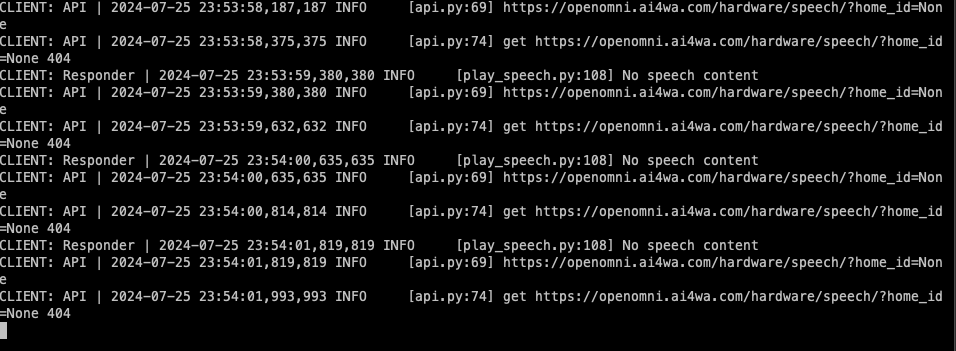
Until now, you should have the whole pipeline running on your local machine.
You should see new tasks created as expected in the Tasks page in the API admin page.
As shown below:
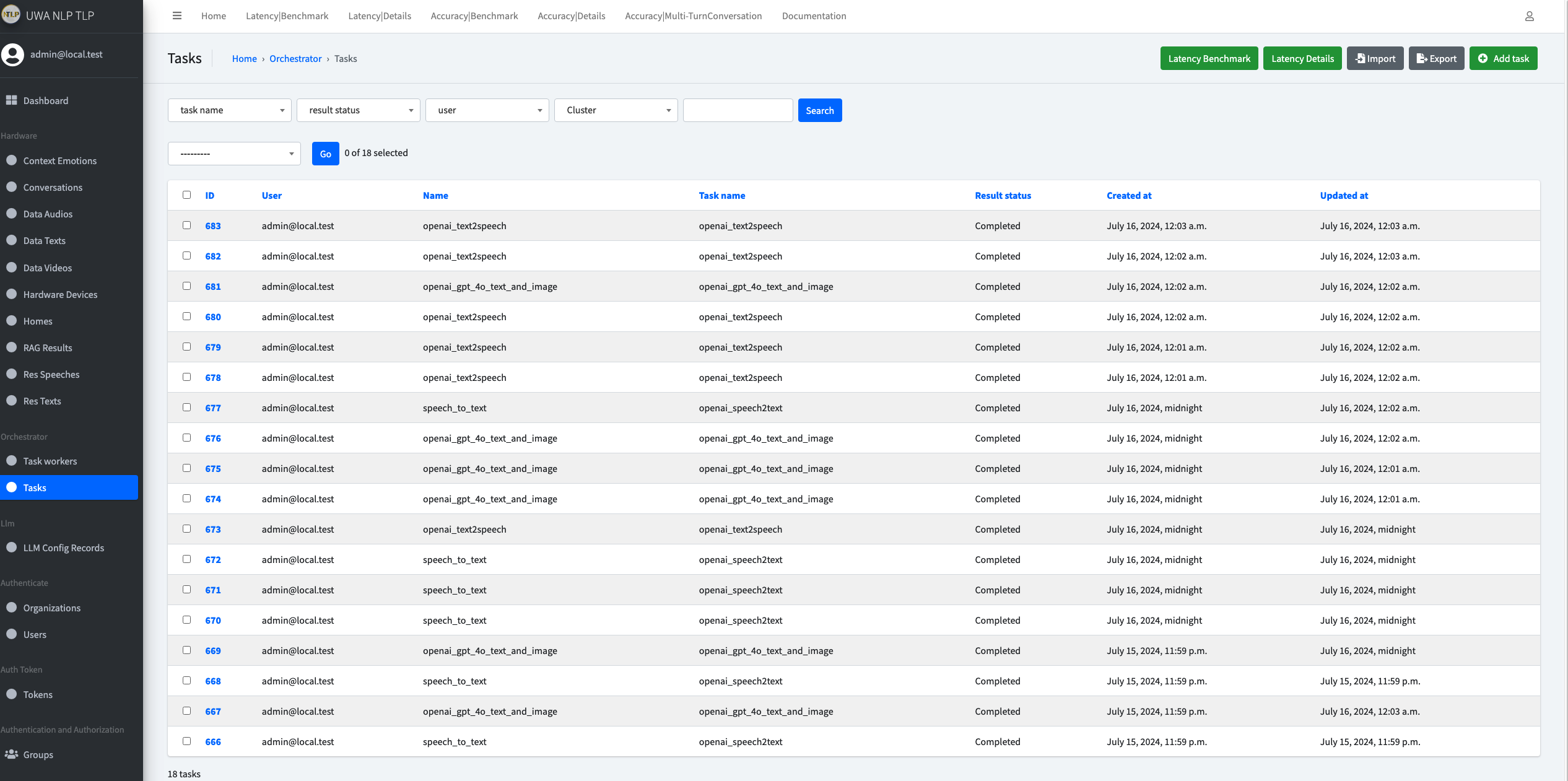
And in the Detailed Latency Benchmark page, you should be able to see the latency of each round of conversation.
